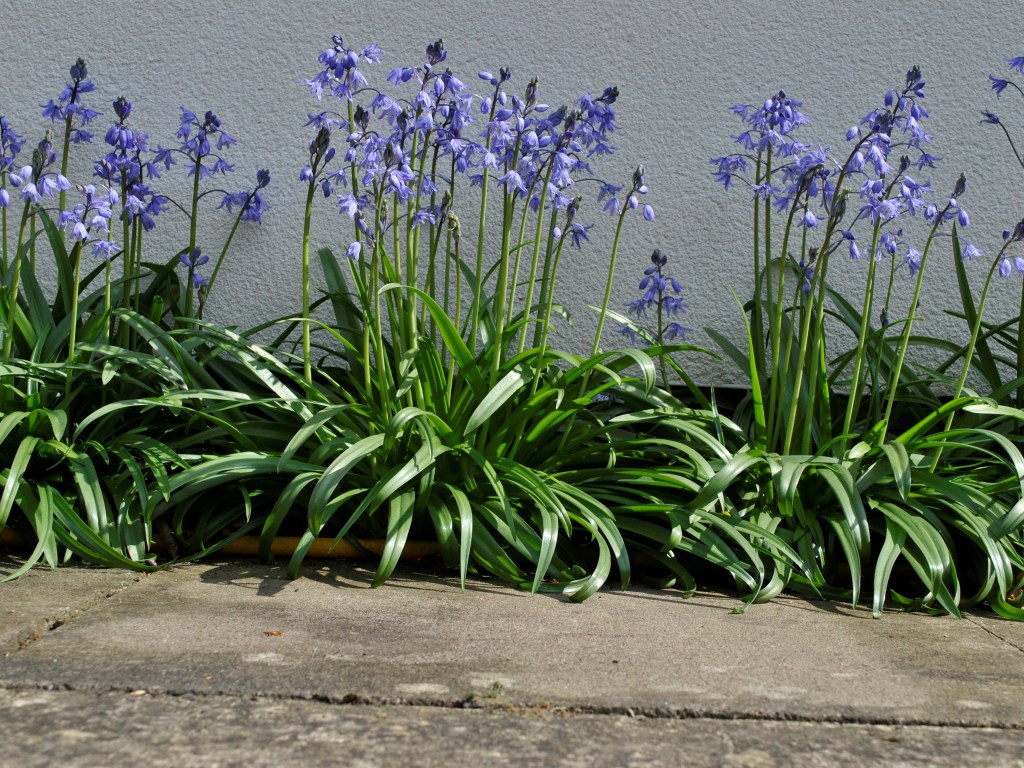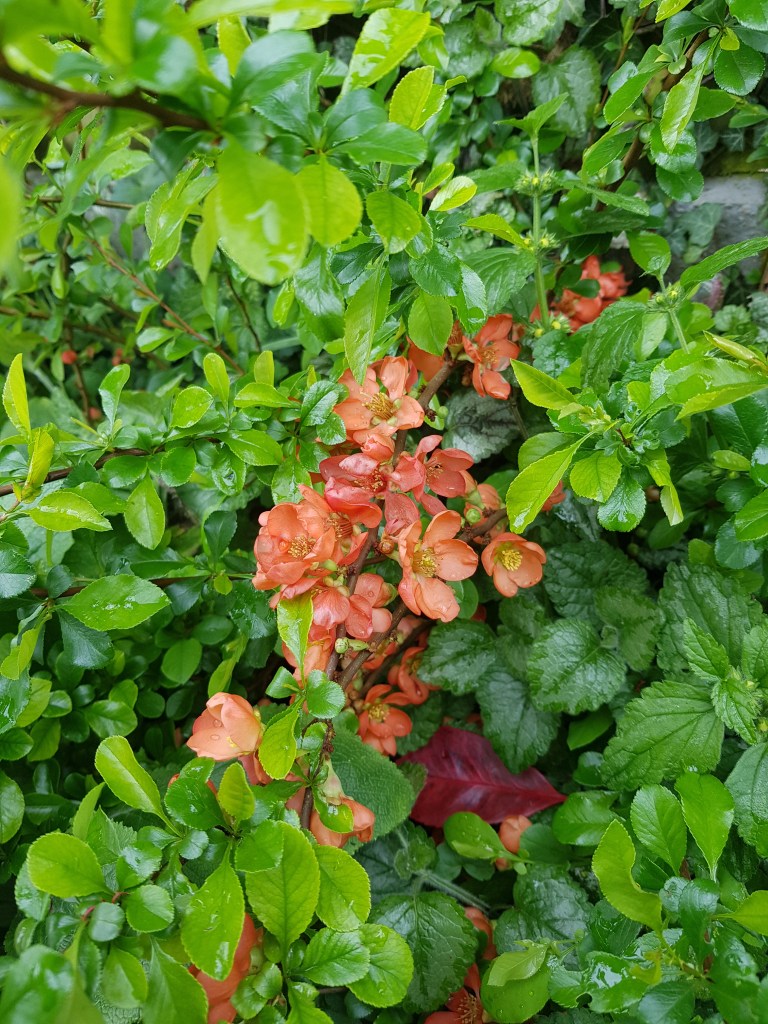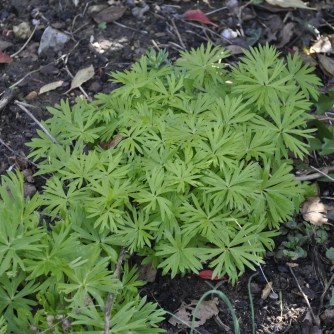
Okay, I know they are frowned upon, hated by some, very promiscuous with the natives and difficult to remove once established BUT if you keep them under control by removing as many as possible each year I think the hybrid bluebell, Hyacinthoides × massartiana, is an acceptable plant in small numbers in suburban gardens. (ducks down under the desk to avoid flying brickbats!) It is an annual process, just like removing any other plant having domination tendencies (Sapponaria comes to mind!) but, after all, that’s part of gardening.

This Chaenomeles japonica (ten points if you know how to pronounce it properly!) was grown several years ago from a pip in a fruit stolen from a friend’s garden. Lucy, if you are reading this, sorry! They are the easiest things to grow from pips and there are often 30 or more in each fruit. They have to be old and dried up before you break into them to take the pips but 3 months on a greenhouse shelf usually does the trick.


The Monkshood, Aconitum carmichaelii, is just emerging from it’s slumbers and looks remarkably like a weedy geranium at this stage. Soon however, it will reach up to the skies with spires of blue hooded flowers, provided I remembered what it was! Sometimes, when I am in weeding frenzy mode, head down, iPod earplugs in, things get mistaken at this early stage and woosh, they are gone!

I have to give the flowering currant, Ribes sanguineum, a round of applause for a spectacular show this year and for providing masses of early nectar for thousands of emerging bumble bees and early exploring honey bees. This plant is on an awkward corner and gets sheared with the beech hedge in August, much later than the books suggest, but it always rewards me with the most wonderful Spring display. A bit out of fashion these days but a stalwart of the Spring garden in my view. The same goes for………

Forsythia, tall, straggly, ugly. Say what you like but it is a trooper and as reliable as a Labrador. Frankly, if I had the time I would prune it properly by removing a third of the oldest branches each year and carefully cutting back this year’s flowered shoots in May. But I don’t have the time or the inclination because I know that whatever I do, it will flower again next year. So it also gets hacked back in August with the Beech hedge which obviously gives it just about enough time to form flowering shoots for the following year.


To round off this week’s common or garden ‘must have’ spring flowers, I should give a very brief mention to Forget-me-nots and Grape Hyacinths. There, I have mentioned them.
Have a great weekend
David








